
Kvant-1 is connected to the rear port of the Core Module.


Kvant-1 is connected to the rear port of the Core Module.

Kvant-1 (37KE) was the first module to be attached to the Core Module of the Soviet space station Mir. It remained attached until the entire space station was deorbited in 2001.
The Kvant-1 module contained scientific instruments for astrophysical observations and materials science experiments. It was used to conduct research into the physics of active galaxies, quasars and neutron stars. It was uniquely positioned for studies of the Supernova SN 1987A.
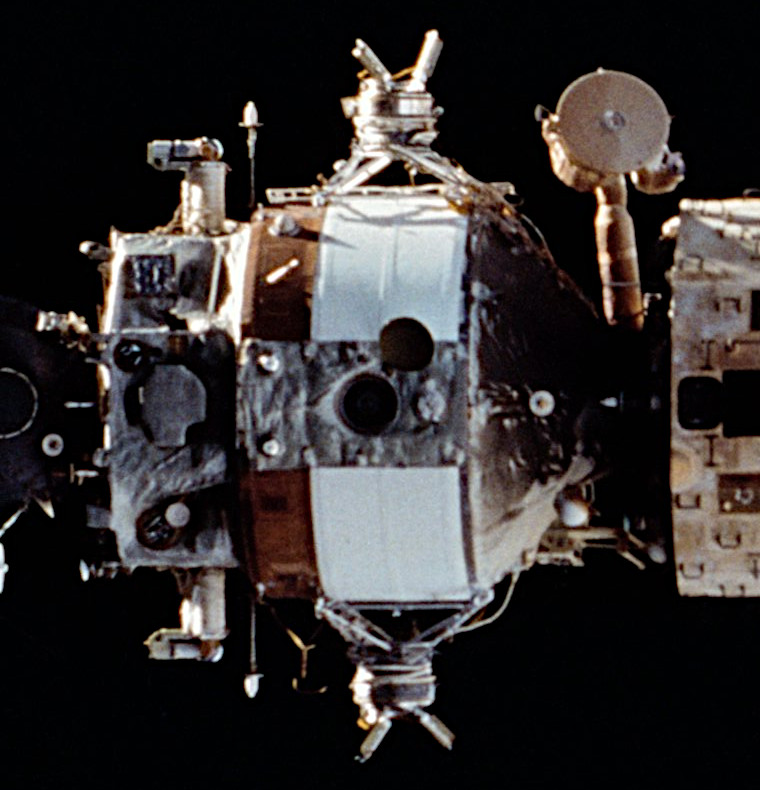
Kvant-1 also supported biotechnology experiments in anti-viral preparations and fractions.
Some additions to Kvant-1 during its lifetime were solar arrays and the Sofora and Rapana girders.
After previous engineering tests with the Salyut 6 and Salyut 7 space stations it became the first module to be attached semi-permanently to the first modular space station in the history of space flight.
Kvant-1 was originally planned to be docked to the Salyut 7 space station and launched on board the Soviet Buran space shuttle. This was later changed to a launch in 1987 to Mir by the Proton-K rocket.
The Kvant spacecraft represented the first use of a new kind of Soviet space station module, designated 37K, whose development began in 1979. The basic 37K design consisted of a 4.2 m diameter pressurised cylinder with a docking port at the forward end. It was not equipped with its own propulsion system.
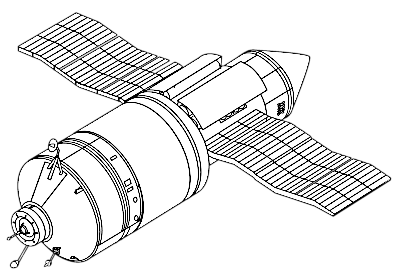
The 37K modules featured a jettisonable TKS-E type propulsion module, also called the Functional Service Module (FSM).
Four 37KS modules were designed for use with Mir. These would be delivered and docked to the station by a new lighter weight FSO tug.
The 37KE was designated Kvant and originally intended for use with the Salyut 7 space station. It was equipped with an astrophysics payload. It also used the Salyut-5B digital flight control computer and Gyrodyne flywheel orientation system developed for Almaz.
As the module neared completion Salyut 7 experienced numerous technical problems and Kvant was re-targeted for a docking with Mir. Kvant-1 was, at that time, the heaviest payload lifted by Proton, requiring special custom modifications to its launch vehicle.
Kvant-1 did not have any propulsion systems of its own and to reach Mir. It was therefore mated with a Functional Service Module (FSM), which carried propulsion and electrical systems, to act as a space tug.
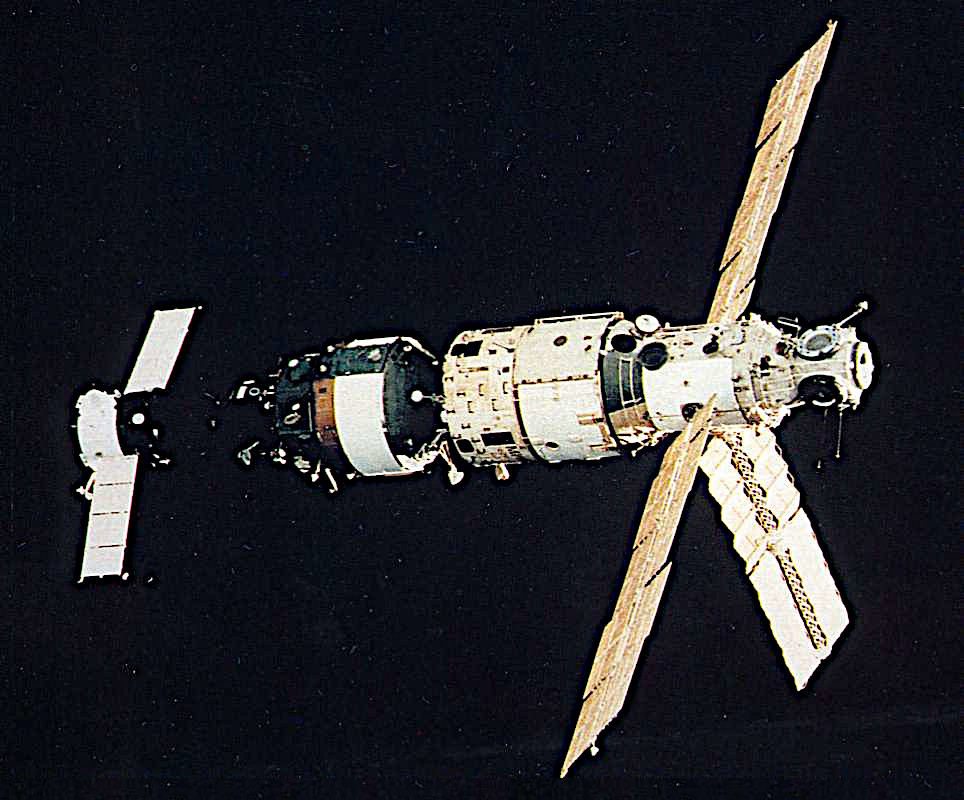
The FSM was derived from the TKS spacecraft, which would later form the basis for the Functional Cargo Block of the Kvant-2, Kristall, Spektr, and Priroda modules.
Kvant-1 and its FSM were launched on March 30, 1987. At this time Mir was occupied by the Expedition crew EO-2 which had docked their Soyuz TM-2 spacecraft to the front port of the Core Module.
On April 9, Kvant-1 achieved a soft dock with the aft port on Mir but was not able to achieve a hard dock. This meant that the two spacecraft were only loosely connected and Mir could not orient itself.
The EO-2 crew conducted an emergency EVA on April 11 and removed a piece of debris that was left by Progress 28. Kvant-1 was able to achieve a hard dock with the station on the same day.
The Kvant-FSM, which was no longer needed, was jettisoned on April 12. This uncovered Kvant-1's rear docking port.
Tests of the onboard systems of Kvant-1 were conducted until the end of April. May was spent in preparation of the extension of the electrical power with activities which required little electricity. Kvant-1 had carried stowed solar arrays, which were attached to the Mir Core Module during an EVA on June 12.
With the additional solar panels installed, Kvant-1's gyrodines were now available and the X-ray telescope could start work. It was uniquely placed to study Supernova SN 1987A in the Large Magellanic Cloud, the peak of its light reaching Earth in May 1987.
Kvant-1 consisted of two pressurized working compartments, one unpressurized experiment compartment and one small airlock for access to the telescopes and film change and retrieval.
It also carried additional life support systems including an Elektron oxygen generator and equipment for removing carbon dioxide from the air.
Scientific equipment onboard Kvant-1 included:
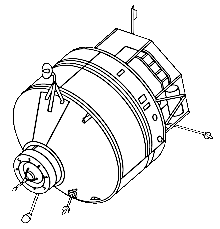
As the gyrodines were powered by electricity, they also reduced significantly the amount of attitude control propellant needed by the Mir base block's control thrusters. They did, however, use a great deal of electricity – the average consumption of the Kvant-1 module was estimated to have been 6.90 kW.
Time in Orbit: 5106 days.
Length: 5.3 m
Diameter: 4.35 m
Launch Mass (including FSM): 20,600 kg
Module Mass (at launch): 11,000 kg
FSM Mass (at launch): 9,600 kg
Habitable volume: 40 m3
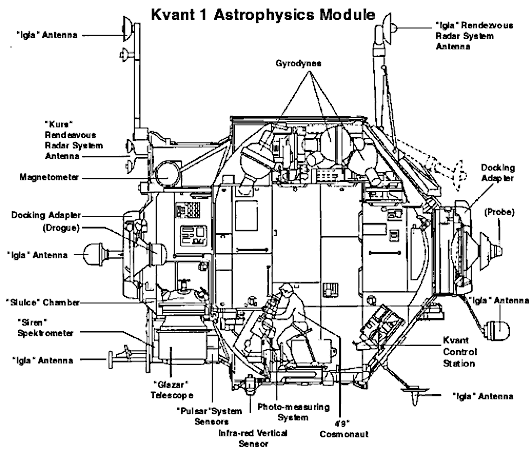
Support structures that were designed to hold solar arrays were installed on Kvant-1 in January 1991.
The crew then constructed the Sofora girder during four EVAs in July 1991. This girder was designed to test new construction techniques, mount a propulsion unit, and act as a place to hold experiments outside the station.
Next the crew installed the VDU propulsion unit on the end of the Sofora girder in September, 1992. It was delivered earlier by Progress M-14. The VDU was designed to increase the station's attitude control capability.
The Rapana girder was constructed on Kvant-1 during two EVAs in September 1993. This girder was designed to test girder assembly experiments for a possible Mir 2 space station. The girder was extended during an EVA in June, 1996.
Later, after the installation of Kristall, one of it's solar panels was re-deployed on Kvant-1.